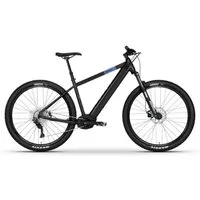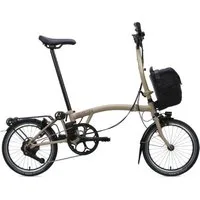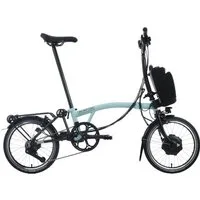AN ELECTRIC BIKE GUIDE
In the last few years, sales of electric bikes, e-bikes or e-cycles have boomed and it has been estimated that in 2019, the electric bike market was worth over $15 billion. In the US sales rose 145%, between 2019 and 2020, indicating that a key driver for the surge in sales was the Covid-19 pandemic.
The attraction of being able to get out and about in a socially distanced way, coupled with the added benefits of extra exercise, has undoubtedly been a catalyst for this exponential growth in both regular bikes and electric bikes.
In the UK, market research company Mintel reports that 170,000 e-bikes were sold in 2020 and although the UK market is behind the US and continental European market there will still be sustained growth. In general terms, further growth will be stimulated by the ever-increasing focus on health and well being, the increasing cost of petrol/car usage and further improvements to the UK’s cycling infrastructure to make cycling safer.
If you are seriously thinking about buying an electric bike here’s a quick guide to exactly what is an electric bike – and how do they work?
What is an electric bike?
In simple terms an electric bike is a normal cycle with a motor and battery installed on it, to help or assist the rider. The assisted boost that the motor provides means the rider can go further and faster with reduced strain or effort.
In more advanced terms, electric bikes are referred to as a hybrid mode of transport because the power generated to turns the wheels from pedalling comes from both the rider pedalling and the motor. In other words, the bike does not pedal itself but instead, the labour to propel the bike is shared and the effort and energy expended is less to get up to speed or ride longer distances. In the UK, this electrical assistance the motor provides is legally set at 15.5 mph and therefore once that speed is reached, the motor ceases to give assistance.
Electric bikes are also referred to as ‘pedelecs’ or EPAC (electronically power assisted cycle) and references that the rider must pedal to activate the motor – rather than turning a throttle.
-
 £1800.00 – VooDoo Mambo-E£1,800.00
£1800.00 – VooDoo Mambo-E£1,800.00 -
 £3079.00 – Brompton Electric C Line 4 Speed with SuperRoll+ – e-Motiq system£3,079.00
£3079.00 – Brompton Electric C Line 4 Speed with SuperRoll+ – e-Motiq system£3,079.00 -
Product on sale
 £2970.00 – Brompton Electric C Line 12 Speed With Roller FrameOriginal price was: £3,230.00.£2,970.00Current price is: £2,970.00.
£2970.00 – Brompton Electric C Line 12 Speed With Roller FrameOriginal price was: £3,230.00.£2,970.00Current price is: £2,970.00.
How does an electric bike work?
In short, when the bike’s pedals are turned, this is recognised by sensors and the motor produces torque. Similarly, when legal limits of assistance are exceeded the sensor tells the motor to switch off.
A further point to note is that an e-bike has either a crank drive motor or direct drive (hub) motor installed. The crank motor provides assistance to the pedals which turn the wheels and feature on high-end e-bikes as they provide greater torque. The direct drive or hub motor provides power to the wheels, literally driving them along.
The second main component, after the motor on a e-bike is the battery. The batteries installed on the latest generation of e-bikes are made from lithium-ion. Re-charging of the battery is quite simple – you just plug it in like a mobile phone.
Fundamentally of course, the battery governs how far you can go on your electric bike. In general terms, more expensive, advanced batteries will store more charge, allowing the rider to go further.
Electric Bike Batteries
Firstly, a few points about battery ratings…
It is important for potential new e-bike owners to understand this central component of any e-bike, as the battery not only powers the motor, the range of travel but also influences handling, design and weight of the bike.
Consequently, it is important to have a simple understanding how electric bike batteries are rated.
Electric Bike Battery and Motor terminology.
1: AMP HOUR (Ah) is a measurement of a battery’s capacity. The latest electric bikes utilise batteries of 10-14 Ah and at the high end 20Ah.
2: VOLTS (V) measures and dictates the force of the electric flow from the battery to the motor. The greater the battery’s voltage the more power it feeds to the motor.
NB: 36V, 48V & 52V are the standard sizes used by manufacturers.
3: WATTS HOUR (Wh) refers to the battery’s energy capacity or the amount of power capable of being stored. This is determined by multiplying the above VxAh to determine the Watt-hour.
4: WATTS (W) refers to the power of the electric motor.
5: TORQUE (Nm) measured in Newton metres. The range of torque on modern e-bikes rates at 40-100NM. The higher the torque the greater the acceleration and assistance when climbing hills.
As a potential electric bike buyer, the most important battery rating to note is watts/hours (Wh) as it rates how much energy is in the battery and how far that energy will take you. In simple terms the higher the Wh the longer the battery will last and the more miles you can travel.
There is a slight problem for the new electric bike rider as there are many factors and variables which affect the range of how far you can ride on a charged battery, despite the potential indicated by the battery and motor ratings. In reality, no ride is the same and the powered assistance provided by the battery, in combination with the rider’s physical effort, on any given day varies. It therefore follows that battery life is not an exact science.
Fortunately, help is at hand, as the relationship between battery, motor and pedal assistance provided to the rider is regulated by a micro computer called a central controller which displays information to rider through a handlebar-mounted display.
In effect, the motor and battery on an e-bike are connected to the central controller which communicates with the sensors and display. The sensors tell the controller how much power to send from the battery to the motor by measuring the torque and how fast the pedals are turning.
Ultimately the controller is determining how much pedal assistance is required, regulates the voltage from the battery, cuts power to the motor or shuts it off and sends battery and pedal assistance to the riders’s display unit.
The control panel display is either handlebar mounted or built into the e-bike’s frame and allows the rider to operate a Pedal Assistance System (PAS). The rider can select the level of powered pedal assistance required from 1 to 5, say or choose a mode such as sport or turbo.
Hopefully, the information above has helped in your understanding of what electric bikes are and how they work.